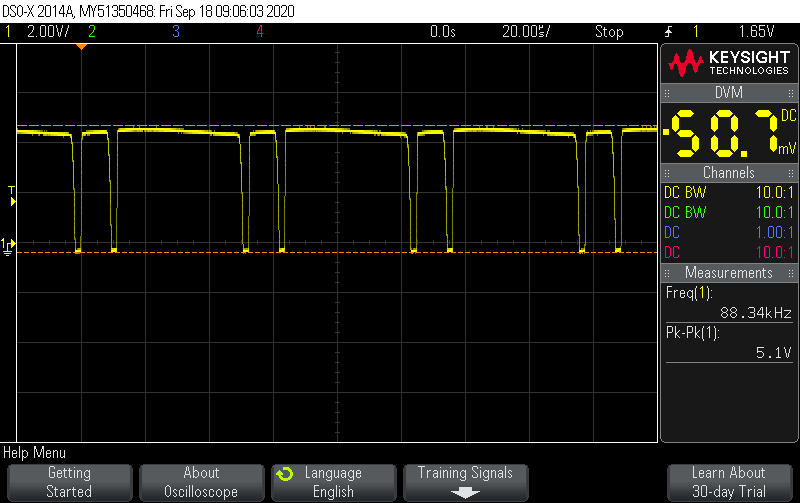Other Parts Discussed in Thread: BQ2000, BQ2000EVM
Hello,
In the document "Using the bq2000/T to Control Fast Charge" there is a formula on page 4 for maximum switching frequency: Rf * Cf = 1 / (4 * F). When I look at the values for Rf and Cf on the bq2000EVM, I see 604 ohms and 1000 pF. That translates to a max. frequency of 414 kHz. This well exceeds the recommended range of 100 to 200 kHz. On the bench, I'm seeing a max. of 130 kHz from the EVM, at 50% duty cycle as predicted. Is the formula incorrect, or is something else going on?
Thanks,
Scott




